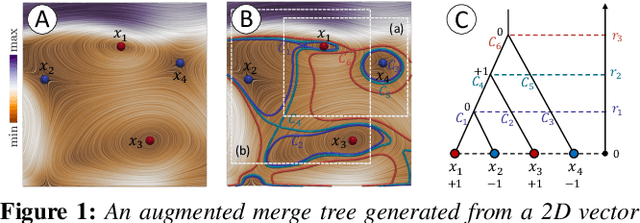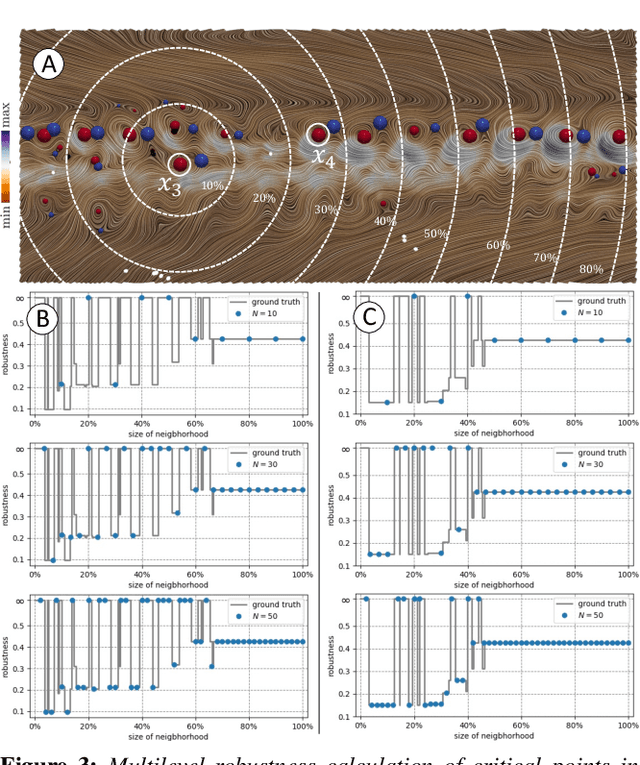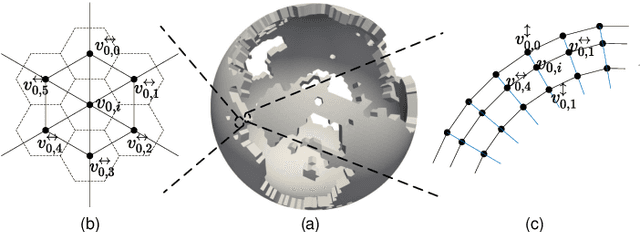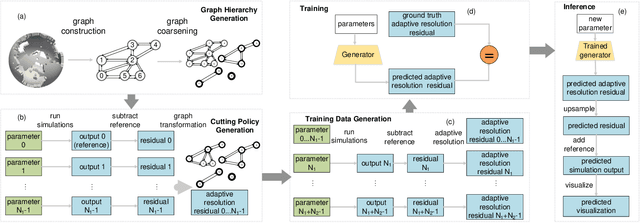Luke P. Van Roekel
Multilevel Robustness for 2D Vector Field Feature Tracking, Selection, and Comparison
Sep 19, 2022



Abstract:Critical point tracking is a core topic in scientific visualization for understanding the dynamic behavior of time-varying vector field data. The topological notion of robustness has been introduced recently to quantify the structural stability of critical points, that is, the robustness of a critical point is the minimum amount of perturbation to the vector field necessary to cancel it. A theoretical basis has been established previously that relates critical point tracking with the notion of robustness, in particular, critical points could be tracked based on their closeness in stability, measured by robustness, instead of just distance proximities within the domain. However, in practice, the computation of classic robustness may produce artifacts when a critical point is close to the boundary of the domain; thus, we do not have a complete picture of the vector field behavior within its local neighborhood. To alleviate these issues, we introduce a multilevel robustness framework for the study of 2D time-varying vector fields. We compute the robustness of critical points across varying neighborhoods to capture the multiscale nature of the data and to mitigate the boundary effect suffered by the classic robustness computation. We demonstrate via experiments that such a new notion of robustness can be combined seamlessly with existing feature tracking algorithms to improve the visual interpretability of vector fields in terms of feature tracking, selection, and comparison for large-scale scientific simulations. We observe, for the first time, that the minimum multilevel robustness is highly correlated with physical quantities used by domain scientists in studying a real-world tropical cyclone dataset. Such observation helps to increase the physical interpretability of robustness.
GNN-Surrogate: A Hierarchical and Adaptive Graph Neural Network for Parameter Space Exploration of Unstructured-Mesh Ocean Simulations
Feb 21, 2022



Abstract:We propose GNN-Surrogate, a graph neural network-based surrogate model to explore the parameter space of ocean climate simulations. Parameter space exploration is important for domain scientists to understand the influence of input parameters (e.g., wind stress) on the simulation output (e.g., temperature). The exploration requires scientists to exhaust the complicated parameter space by running a batch of computationally expensive simulations. Our approach improves the efficiency of parameter space exploration with a surrogate model that predicts the simulation outputs accurately and efficiently. Specifically, GNN-Surrogate predicts the output field with given simulation parameters so scientists can explore the simulation parameter space with visualizations from user-specified visual mappings. Moreover, our graph-based techniques are designed for unstructured meshes, making the exploration of simulation outputs on irregular grids efficient. For efficient training, we generate hierarchical graphs and use adaptive resolutions. We give quantitative and qualitative evaluations on the MPAS-Ocean simulation to demonstrate the effectiveness and efficiency of GNN-Surrogate. Source code is publicly available at https://github.com/trainsn/GNN-Surrogate.
 Add to Chrome
Add to Chrome Add to Firefox
Add to Firefox Add to Edge
Add to Edge